New Toyota HiLux review: Broad improvements cement ute’s place at the top
The Toyota HiLux has been the best selling vehicle in the country for the past few years. And it is now better than ever.
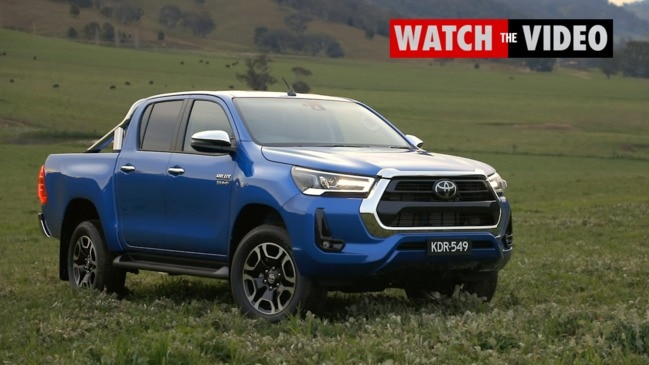
New cars
Don't miss out on the headlines from New cars. Followed categories will be added to My News.
Big numbers headline Toyota’s updated HiLux – it now has 150kW of power, 500Nm of torque and the ability to tow 3500 kilograms. But the most important number to Toyota is “one”, the car’s place as the most popular new vehicle car in Australia.
Bragging rights are important for ute buyers.
Now, no car in the class can claim to tow more than the HiLux, and its pulling power matches or betters all four-cylinder rivals, outpunched only by the likes of Volkswagen’s Amarok V6.
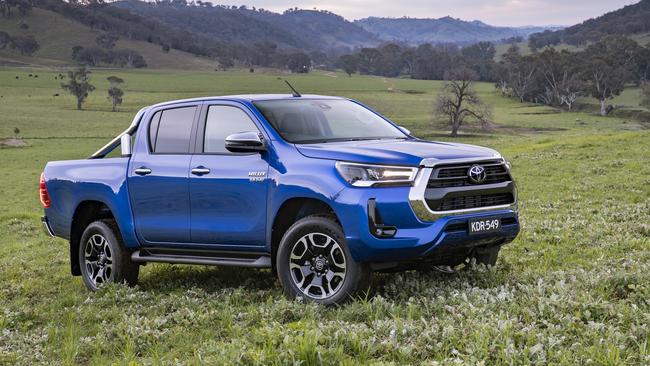
Previously rated to tow 3.2 tonnes in auto form, the HiLux’s extra 300 kilos of hauling potential stems from revisions to its 2.8-litre turbo diesel engine. Uprated from 130kW and 450Nm to 150kW and 500Nm, Toyota’s motor brings a smoother, comparatively effortless performance compared to the outgoing model.
The extra punch closes the gap to its arch-rival in Ford’s much heavier Ranger, which has an extra 7kW of power when equipped with an optional 2.0-litre engine.
Other mechanical changes include tweaks to the steering intended to make the HiLux easier to manoeuvre, along with significant changes to the rear springs and shock absorbers.
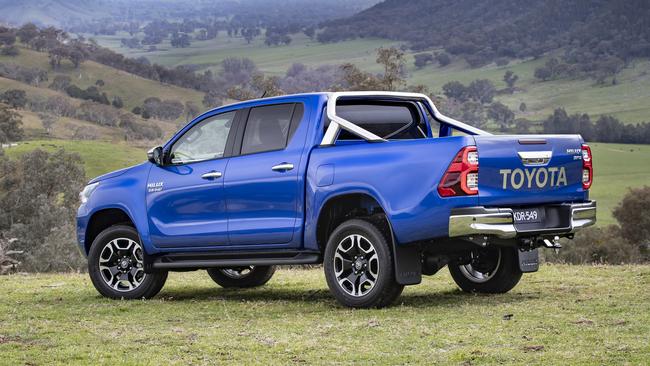
Recognising dual-cab four-door utes have replaced sedans and wagons for thousands of families, Toyota worked to improve the HiLux’s unladen behaviour. New suspension offers more compliance over bumps, eliminating the skipping sensation pick-ups often have without a load in the tray.
It also performed well off-road, with the softer suspension maintaining better contact with the ground on rough country surfaces than its stiffer-sprung predecessor.
There could be a trade-off when towing or carrying heavy cargo, but limited time with the HiLux at launch prevented us from putting its 995 kilogram payload to a more comprehensive test.
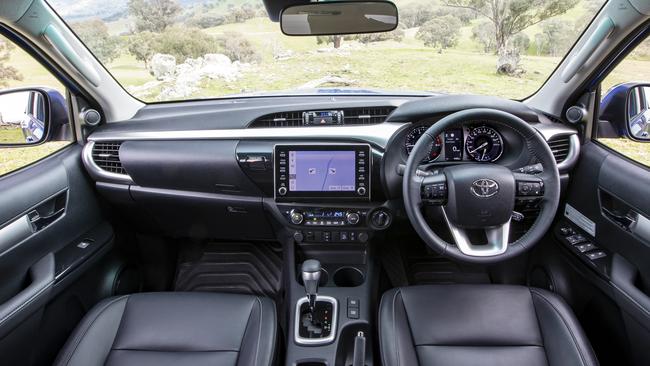
We can say that a revised front end with LED headlamps looks sharp in the metal, though the subtly reworked rear end with redesigned tail-lights is harder to pick as a new model.
There are more than 30 variants in the HiLux range, including two-door, four-door and extra cab versions, high and low-riding models, two-wheel-drive and all-wheel-drive versions, a choice of petrol or diesel engines, and manual or automatic transmissions.
The cheapest “Workmate” models aimed at budget-minded corporate buyers miss out on the new front end, retuned suspension and powerful diesel engine.

Manual four-wheel-drive models are limited to 420Nm, so we tested the HiLux in popular dual-cab SR5 diesel auto trim to experience the reworked motor.
Priced from $59,920 plus on-road costs (about $65,000 drive-away), the SR5 benefits from a revised interior including a larger 8-inch touchscreen with Apple CarPlay and Android Auto as well as the addition of front and rear parking sensors on dual-cab models (trayback variants miss out). Running changes to the HiLux introduced in 2019 saw safety features such as auto emergency braking with pedestrian detection, along with active cruise control, lane keeping assistance and traffic sign recognition added to a safety suite including seven airbags and stability control.
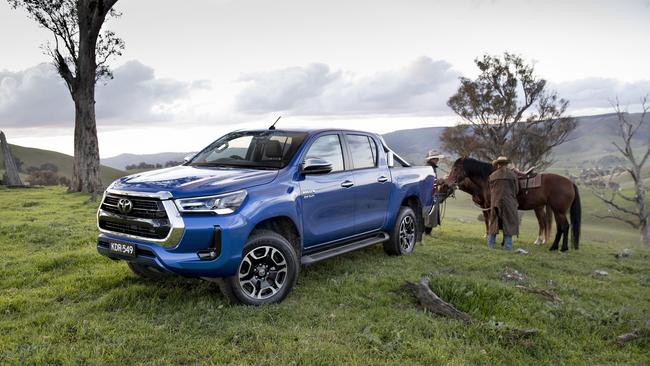
That’s an impressive suite of equipment. And it feels better than ever on the road.
There’s little to dislike about the HiLux, and the latest update address much of the old car’s flaws.
A firm unladen ride, dated infotainment system and underwhelming engine are no longer problematic. The same appears to be true of issues surrounding the previous car’s diesel particulate filter, which now benefits from a revised automatic burn-off procedure and a manual button allowing drivers to superheat its exhaust system and get rid of excess soot.
But we’re still bothered by six-month, 10,000 kilometre maintenance intervals (most cars can go a year between services), and buyers on a budget may be drawn to cheaper rivals.
VERDICT 4/5
The 2020 Toyota HiLux SR5 builds on the brand’s strengths while addressing the previous model’s weaknesses, making it easy to recommend.
TOYOTA HILUX SR5 AUTO VITALS
Price: From $59,920 plus on-road costs
Engine: 2.8-litre 4-cyl turbo diesel, 150kW/500Nm
Warranty/Service: 5 years/unlimited km, $1500 for 5 years
Safety: 5 stars, 7 airbags, auto emergency braking, lane keeping assistance, active cruise control
Thirst: 7.9L/100km
Payload/Towing: 995kg/3500kg
Spare: Full size
Originally published as New Toyota HiLux review: Broad improvements cement ute’s place at the top
